Inspiring Alternatives to the Traditional Lawn
Consider the many attractive and ecologically friendly alternatives to turfgrass
Lawns have their place in the American landscape. They are visually uncomplicated and easy on the eyes. As play surfaces, most turfgrass types are able to take some abuse and are relatively easy on the abusers. But it is safe to say we have way more lawn than is needed, considering all the other options available; many of those options are better for the environment and less expensive to maintain.
Creeping red fescue (Festuca rubra) is a cool-season grass native to North America that has a silky appearance when left unmown.
Alternative Grasses
While they can’t take the foot traffic of a conventional lawn, a number of no- or low-mow grass blends and native grasses can be used to provide a similar visual appearance. In the northern half of the U.S., there are a number of fine fescue blends that look good without being mowed. They also need less fertilizer and water. In the southern and central parts of North America, buffalo grass (Bouteloua dactyloides, USDA zones 4 to 8; find your zone) is a native grass that has been developed for turf use. St. Augustine grass (Stenotaphrum secundatum, zones 7 to 12) is a popular turfgrass that’s native to the coastal regions of the Southeast.
Shop for patio furniture
Alternative Grasses
While they can’t take the foot traffic of a conventional lawn, a number of no- or low-mow grass blends and native grasses can be used to provide a similar visual appearance. In the northern half of the U.S., there are a number of fine fescue blends that look good without being mowed. They also need less fertilizer and water. In the southern and central parts of North America, buffalo grass (Bouteloua dactyloides, USDA zones 4 to 8; find your zone) is a native grass that has been developed for turf use. St. Augustine grass (Stenotaphrum secundatum, zones 7 to 12) is a popular turfgrass that’s native to the coastal regions of the Southeast.
Shop for patio furniture
A lawn of sand dune sedge (Carex pansa), native to the Pacific Coast of North America, fills a Los Angeles garden.
In the U.S. West, there are several native grasses that perform well as lawns, including seashore bentgrass (Agrostis pallens, zones 5 to 9) and blue grama (Bouteloua gracilis, zones 3 to 10), native to the Great Plains and the Southwest. Throughout North America there are sedges that can be used as alternatives to conventional lawn grasses; however, these tend to be more sensitive to foot traffic.
In the U.S. West, there are several native grasses that perform well as lawns, including seashore bentgrass (Agrostis pallens, zones 5 to 9) and blue grama (Bouteloua gracilis, zones 3 to 10), native to the Great Plains and the Southwest. Throughout North America there are sedges that can be used as alternatives to conventional lawn grasses; however, these tend to be more sensitive to foot traffic.
Need a pro for your landscape design project?
Let Houzz find the best pros for you
Let Houzz find the best pros for you
Kitchen Garden
Before the invention of the lawn mower, cottage gardens and kitchen gardens were much more common in the front yard. Growing plants for food and medicine was a necessary part of life, and these plants were grown wherever there was space. As food and medicines became more available, the kitchen gardens were replaced with more decorative plantings.
With changing attitudes and new concepts in design, the front yard vegetable garden, or at least the incorporation of vegetables into the front garden, has become more acceptable again.
Before the invention of the lawn mower, cottage gardens and kitchen gardens were much more common in the front yard. Growing plants for food and medicine was a necessary part of life, and these plants were grown wherever there was space. As food and medicines became more available, the kitchen gardens were replaced with more decorative plantings.
With changing attitudes and new concepts in design, the front yard vegetable garden, or at least the incorporation of vegetables into the front garden, has become more acceptable again.
At this home in Austin, Texas, the lawn has been minimized into a few decorative squares, with stone and steps dominating the space.
Hardscape Elements
In areas with long dry spells, abandoning lawns in favor of a less thirsty ground cover fits well with the character of the region and the environment. Here, gravel or stone can be used in a variety of ways. You can achieve some interesting results by mixing stone colors or textures. These surfaces also work well with plants adapted to dry regions, like palo verde (Parkinsonia aculeata, zones 8 to 11), aloes, autumn sage (Salvia greggii, Zone 7) and sedums.
Hardscape Elements
In areas with long dry spells, abandoning lawns in favor of a less thirsty ground cover fits well with the character of the region and the environment. Here, gravel or stone can be used in a variety of ways. You can achieve some interesting results by mixing stone colors or textures. These surfaces also work well with plants adapted to dry regions, like palo verde (Parkinsonia aculeata, zones 8 to 11), aloes, autumn sage (Salvia greggii, Zone 7) and sedums.
A labyrinth is just one idea for incorporating a mix of hardscape and plantings while reducing turf.
If you are not ready to give up on turf altogether, consider reducing the amount of it and adding other elements. One option is to make a labyrinth — not a maze from which there is no escape, but a meditative path with only a single, albeit twisted, route that allows you to focus your mind as you walk it. It is one way to integrate hardscape and a variety of plantings.
If you are not ready to give up on turf altogether, consider reducing the amount of it and adding other elements. One option is to make a labyrinth — not a maze from which there is no escape, but a meditative path with only a single, albeit twisted, route that allows you to focus your mind as you walk it. It is one way to integrate hardscape and a variety of plantings.
In this front yard, the turf has been forgone for a mixture of steppingstones, gravel and low-maintenance, drought-tolerant plants.
More simply, you can create a more direct pathway with steppingstones, pavers or other materials to focus foot traffic and allow the use of plantings that are less tolerant of being stepped on. This also cuts down on soil compaction and improves water infiltration.
Before and After: 3 Yards Lose Lawns and Gain Gardens
More simply, you can create a more direct pathway with steppingstones, pavers or other materials to focus foot traffic and allow the use of plantings that are less tolerant of being stepped on. This also cuts down on soil compaction and improves water infiltration.
Before and After: 3 Yards Lose Lawns and Gain Gardens
Mulch can also be used as a ground cover. Using mulch alone is strictly utilitarian and usually has a barren or unfinished look. It is, however, an excellent ground covering while you are establishing a planting, or used as a gap filler between and around other landscape features or plantings.
A bioswale is used to channel water away from a patio on this San Francisco property. The water is absorbed into the ground as it moves along the channel, with plants helping to hold the soil and filter out pollutants.
Rain Garden
On properties with water runoff problems, replacing turf with a rain garden is a viable option that benefits the environment by treating stormwater on-site and replenishing the water table. If you have well-draining soil, a rain garden is fairly simple to make. Depending on the number and types of plants you use, it can have a somewhat formal or naturalistic appearance. The primary requirement is that the plants must be able to tolerate wet soils for a period of time, with some dry periods in between.
Rain Garden
On properties with water runoff problems, replacing turf with a rain garden is a viable option that benefits the environment by treating stormwater on-site and replenishing the water table. If you have well-draining soil, a rain garden is fairly simple to make. Depending on the number and types of plants you use, it can have a somewhat formal or naturalistic appearance. The primary requirement is that the plants must be able to tolerate wet soils for a period of time, with some dry periods in between.
The mown edge surrounding this small meadow gives it a sense of intentionality and provides safe and easy access to view the plants and wildlife.
Natural Meadow or Woodland
If you are tolerant of some randomness on your property, and you have a site that receives at least half a day of sunlight, you might consider a meadow as an alternative ground cover. A true meadow is a blend of grasses and forbs (nongrass flowering herbaceous plants) growing together with minimal management. A successful meadow installation requires proper site preparation to remove all weedy (undesired) vegetation and then two to three years of monitoring as the new meadow plants become established. On a smaller scale, you can create the impression of a meadow by intertwining drifts of grasses and forbs, but these will require continued maintenance to keep them looking nice over the years.
In tall grasses and thickets, ticks and chiggers can be an issue. It is best to provide a buffer zone of a low cover, 6 inches or less, such as a mown edge at least 3 feet wide where people can walk or congregate. These insects also prefer partially shaded areas over full sun, so foot traffic should be directed to the more open areas.
How to Design a Meadow Garden Everyone Will Love
Natural Meadow or Woodland
If you are tolerant of some randomness on your property, and you have a site that receives at least half a day of sunlight, you might consider a meadow as an alternative ground cover. A true meadow is a blend of grasses and forbs (nongrass flowering herbaceous plants) growing together with minimal management. A successful meadow installation requires proper site preparation to remove all weedy (undesired) vegetation and then two to three years of monitoring as the new meadow plants become established. On a smaller scale, you can create the impression of a meadow by intertwining drifts of grasses and forbs, but these will require continued maintenance to keep them looking nice over the years.
In tall grasses and thickets, ticks and chiggers can be an issue. It is best to provide a buffer zone of a low cover, 6 inches or less, such as a mown edge at least 3 feet wide where people can walk or congregate. These insects also prefer partially shaded areas over full sun, so foot traffic should be directed to the more open areas.
How to Design a Meadow Garden Everyone Will Love
In this woodland lot in the Boston area, verdant interrupted fern (Osmunda claytoniana, zones 3 to 8) fills in the shady spaces.
If your property is surrounded by woodlands and shade, it is next to impossible to grow turf. Here, look for shade-tolerant species like ferns and spring ephemerals to decorate the ground plane. Pine needles and leaf litter are very natural ground covers in woodlands as well, and they’re usually free. One caution though: Since ticks prefer shady environments like woodlands, it is important to provide buffer zones free of vegetation or thick leaf mulch around paths and seating areas, if ticks are a problem in your area.
If your property is surrounded by woodlands and shade, it is next to impossible to grow turf. Here, look for shade-tolerant species like ferns and spring ephemerals to decorate the ground plane. Pine needles and leaf litter are very natural ground covers in woodlands as well, and they’re usually free. One caution though: Since ticks prefer shady environments like woodlands, it is important to provide buffer zones free of vegetation or thick leaf mulch around paths and seating areas, if ticks are a problem in your area.
This swath of moss looks like turf from a distance and is perfectly happy growing on this shaded site.
If moss is growing well, embrace it. Moss grows well on consistently moist, partially shady soils with a somewhat acidic pH. Moss does not like foot traffic, so if you need to walk across it often, provide some steppingstones or some other kind of designated pathway.
If moss is growing well, embrace it. Moss grows well on consistently moist, partially shady soils with a somewhat acidic pH. Moss does not like foot traffic, so if you need to walk across it often, provide some steppingstones or some other kind of designated pathway.
Large beds of ground covers provide an attractive frame for this ranch-style house in Portland, Oregon. These are particularly good on slopes, where mowing can be tricky.
Another, and perhaps the most conventional, option is to use low ground-covering plants around your home. Using a single or just a couple of species supports a formal appearance, while mixing drifts of different species with varying heights and colors tends toward the informal.
Increasing species diversity in the planting and using more native species supports the ecological function, by providing food and habitat for insects and reducing the need for watering and adding yard chemicals.
Volumes have been written on the many plants that can be used as ground covers, and many suited to your location are available at garden centers and nurseries. Instead of the exotic and sometimes invasive species, like Japanese pachysandra, English ivy and periwinkle, look for low-growing species native to your region. Some of my favorites include moss phlox (Phlox subulata, zones 3 to 9), frogfruit (Phyla spp.), green and gold (Chrysogonum virginianum, zones 5 to 9), creeping juniper (Juniperus horizontalis, Zone 4), three row stonecrop (Sedum sp.) and lower-growing grasses like prairie dropseed (Sporobolus heterolepis, zones 3 to 8) and tufted hairgrass (Deschampsia cespitosa, zones 4 to 9).
More on Houzz
Tour more landscapes
Browse landscape photos
Find a landscape contractor
Shop for your outdoor spaces
Another, and perhaps the most conventional, option is to use low ground-covering plants around your home. Using a single or just a couple of species supports a formal appearance, while mixing drifts of different species with varying heights and colors tends toward the informal.
Increasing species diversity in the planting and using more native species supports the ecological function, by providing food and habitat for insects and reducing the need for watering and adding yard chemicals.
Volumes have been written on the many plants that can be used as ground covers, and many suited to your location are available at garden centers and nurseries. Instead of the exotic and sometimes invasive species, like Japanese pachysandra, English ivy and periwinkle, look for low-growing species native to your region. Some of my favorites include moss phlox (Phlox subulata, zones 3 to 9), frogfruit (Phyla spp.), green and gold (Chrysogonum virginianum, zones 5 to 9), creeping juniper (Juniperus horizontalis, Zone 4), three row stonecrop (Sedum sp.) and lower-growing grasses like prairie dropseed (Sporobolus heterolepis, zones 3 to 8) and tufted hairgrass (Deschampsia cespitosa, zones 4 to 9).
More on Houzz
Tour more landscapes
Browse landscape photos
Find a landscape contractor
Shop for your outdoor spaces
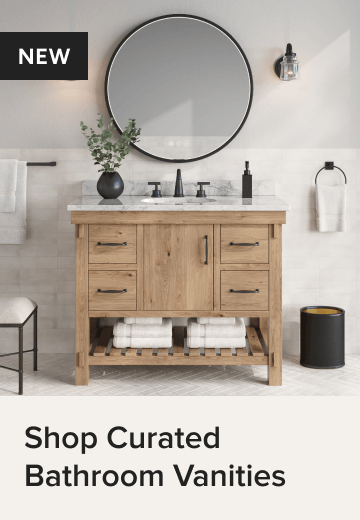
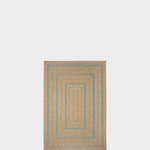
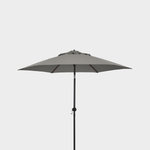
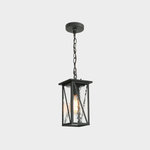
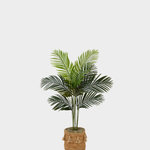
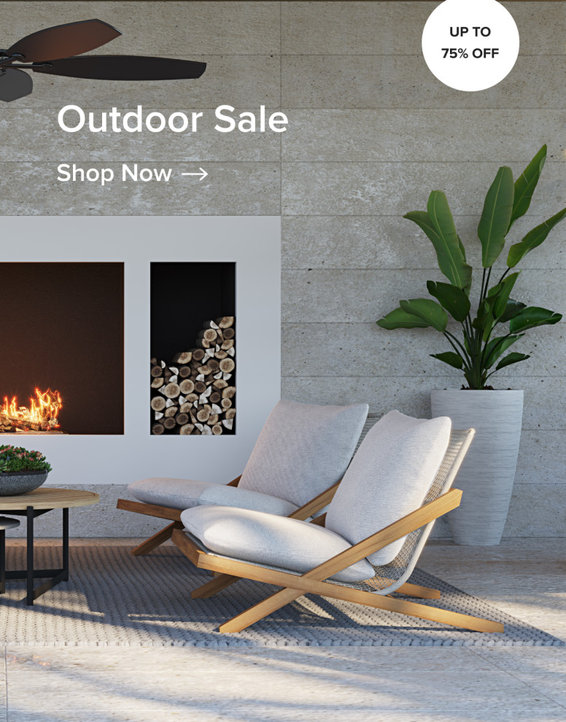










There are many uses for ground covers in the landscape. They are often used to provide a visual frame around a house, something attractive but that doesn’t distract from the main architectural or landscape features. They can also be used to cover a play area or an entertaining space or to line a walkway. On a smaller scale, they fill the spaces between other larger plants or features in the garden. On a larger scale, they fill the space between windows and the long views across a property to the neighbors and beyond.
In choosing how to cover your ground layer, consider making it as sustainable as possible by choosing locally sourced materials and plants that are well-adapted to the site conditions — soil type, available moisture, sun exposure and fertility.
Limit runoff from the property by using as many water-permeable surfaces as possible, grading the surface to enhance water infiltration and including rain gardens or dry wells. In areas where there are ordinances restricting what you can do with your front yard, you will need to work within those, or coordinate with local authorities to show them how your ideas will work.
Find a landscape designer on Houzz